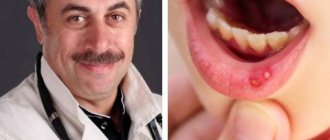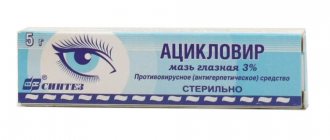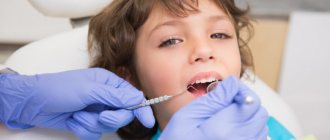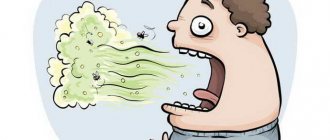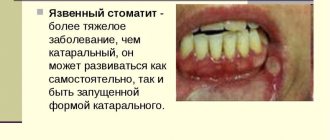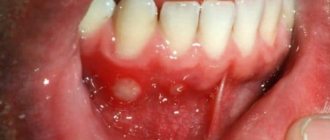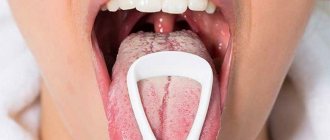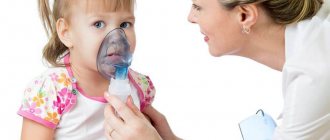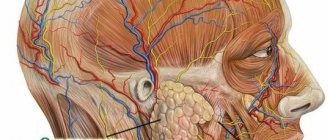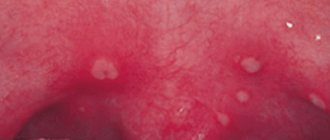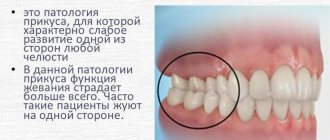Problems with skin rashes are often associated not only with adolescence in adolescents. Sometimes the most harmless small pimple can turn into an inflamed abscess, followed by slow healing. Many adults already know where purulent pimples can appear. As a rule, they can rash in the face, back, chest, and so on.
Suppuration of a pimple can be a consequence of self-squeezing out the acne. Lack of sanitation leads to numerous inflammations, and effective treatment of purulent acne already requires the intervention of antibiotics.
It's no secret that frequent purulent rashes spoil the skin and worsen the appearance, but few people understand how dangerous these inflammations are for the human body as a whole. After all, inflammation can spread to healthy areas and instantly spread through the blood throughout the body.
Treating an abscess with baked onions
Onions have long been used to treat problems such as purulent abscesses. The product is distinguished by its effectiveness and ease of use. You can bake an onion for therapy in a variety of ways.
- In the oven. Peel the onion, cut it in half and wrap it in foil. Bake for about 20 minutes until softened. If you don’t have foil on hand, you can bake a whole onion, but you need to do it longer - at least half an hour. You can also peel the onion, cut it into thin rings, then place it on a baking sheet, cover it with foil and bake until maximum softness. The resulting mixture is applied to a purulent abscess.
- In a frying pan. If you don’t have an oven, or it’s not working, you can use a regular frying pan. Peel the onion, cut in half, place both halves in the pan. It is important that the pan has a thick enough bottom. Cover the pan with a lid and bake over low heat for about 10 minutes. If the onion is slightly burnt, remove these parts. The rest can be used to treat a purulent abscess.
- In the microwave. To treat an abscess, you can use onions baked in the microwave. Here it reaches softness as quickly as possible - in just five minutes.
- Boiled onions against abscess. If you have nowhere to bake onions, then boiled onions will do as a last resort. To do this, you need to boil a small amount of water. Throw in a pre-peeled onion, cut in half. You need to cook for no more than three minutes. Separate the boiled onion halves into flakes, remove the film and apply the onion to the abscess. Secure it with a bandage and leave it overnight. In the morning, crush a streptocide tablet and cover the affected area, change the bandage. If the wound has only recently formed, then with the help of such treatment you can get rid of a purulent abscess on a finger or any other part of the body in just a day.
Pyoderma in adults and children
Pustular skin diseases are primary and secondary.
Pustular skin diseases are a large group of diseases caused by staphylococci, streptococci or mixed flora.
The prevalence of this pathology is very high.
Almost every person experiences pyoderma during their lifetime. The following structures are affected:
- epidermis;
- dermis;
- nails;
- hair;
- sebaceous glands;
- sweat glands.
The infection can spread to joints and bones. In severe cases, microbes enter the bloodstream and disrupt the function of internal organs.
Pyoderma in children and adults can be primary or secondary. In the first case, it develops independently. The secondary form can be a complication of other diseases: scabies, diabetes, eczema.
There are staphyloderma, streptoderma and streptostaphyloderma.
Infection may spread to joints and bones
The most common pustular diseases are:
- furuncle;
- furunculosis;
- carbuncle;
- folliculitis;
- vesiculopustulosis;
- hidradenitis;
- sycosis;
- ostiofolliculitis;
- pseudofurunculosis;
- streptococcal impetigo;
- lichen simplex;
- jam;
- ecthyma;
- cellulite;
- paronychia;
- erysipelas;
- mixed form of impetigo;
- ulcerative-vegetative chronic pyoderma;
- cicatricial folliculitis.
The greatest danger is posed by deep pyoderma.
Causative agents of pustular diseases
In children and adults, pyoderma is caused by staphylococci and streptococci. They are representatives of the natural human microflora. Their habitat is the skin. Most staphylococci and streptococci belong to opportunistic microflora, but some of them are pathogenic.
Staphylococci produce toxins
Staphylococci play a major role in the development of pyoderma. These bacteria have the following distinctive features:
- are normal inhabitants of the skin;
- found in large quantities under the nails and in the folds of the skin;
- represented by 20 species;
- unable to move;
- spherical shape;
- undemanding to the nutrient medium;
- can cause allergic reactions;
- have different pathogenicity factors.
Staphylococci produce toxins (sphingomyelinase, alpha toxin and exfoliative toxin). Other pathogenicity factors of these bacteria are adhesins, protein A, enzymes and capsule. All of them help microbes maintain their numbers, penetrate the skin and survive under unfavorable environmental conditions.
Streptococci in children and adults have a spherical shape. They are arranged in the form of chains. Streptococci produce toxins, enzymes and protein M. These bacteria are isolated in every tenth patient with pyoderma. They are very stable in the environment. Streptococci can withstand low temperatures.
Causes of pustular diseases
Abscesses on the body in children and adults form for various reasons. The following predisposing factors are of greatest importance:
- presence of scabies;
- decreased immunity;
- hypothermia;
- viral diseases;
- overwork;
- presence of diabetes mellitus;
- chronic kidney and heart diseases;
- foci of chronic infection;
- lack of personal hygiene;
- skin microtraumas;
- malignant tumors;
- radiation or chemotherapy;
- autoimmune diseases;
- cachexia;
- hypovitaminosis;
- overheating;
- obesity.
Microbes begin to manifest their properties when the body’s resistance decreases. Immunity impairment can be local or general. In the first case, the barrier (protective) function of the skin decreases. This makes it easier for bacteria to penetrate the skin.
Risk factors for the development of pyoderma are overwork, poor nutrition, childhood, skin contact with various chemicals and irritants, environmental pollution and sweating. Children under 4 years of age often get sick.
Hidradenitis as a type of pyoderma
Adults may develop a pathology such as hidradenitis. This is a purulent disease characterized by damage to the sweat glands. The causative agents of infection are staphylococci. Hidradenitis does not develop in childhood and old age, since during these periods the sweat glands practically do not function.
Predisposing factors are puberty, menopause, changes in skin pH, hyperhidrosis, obesity, diabetes mellitus, impaired thermoregulation, diaper rash and skin maceration.
Hidradenitis is characterized by damage to the sweat glands
The following areas are most often involved in the process:
- armpits;
- crotch;
- scrotum;
- labia majora;
- breast halos;
- scalp.
In most patients, the axillary area is affected.
The inflammation is unilateral. The following symptoms are observed:
- itching;
- dense nodules;
- paired blackheads;
- change in skin color over the node;
- soreness;
- edema;
- pain;
- sleep disturbance;
- fever;
- headache;
- weakness.
Initially, a node up to 2 cm in size appears. After a few days, it suppurates.
If treatment is not carried out, there is a risk of developing sepsis
Black dots appear near the node, resembling blackheads or purulent pimples on the face. The color of the skin in the area of suppuration becomes red-blue. Swelling occurs. It is caused by stagnation of interstitial fluid. Multiple nodes can merge with each other.
In this case, a large infiltrate is formed. The sweat gland tissue is destroyed. A cavity forms and fills with pus. At first the knot is tight, but then it softens. The symptom of fluctuation is characteristic.
A necrotic core does not form in hidradenitis. The abscess opens. During this period, the general condition of the person improves.
An ulcer appears at the site of the node, which leaves behind a scar. If treatment is not carried out, then there is a risk of developing phlegmon, sepsis and lymphadenitis. Frequent relapses are possible. Sometimes this pustular disease becomes chronic. The total duration of hidradenitis is about 2 weeks.
Formation of boils on the skin
A purulent pathology such as a boil can occur in children and adults. In everyday life it is called boil. This is a form of staphyloderma, characterized by purulent inflammation of the hair follicle and involvement of surrounding tissues in the process. This disease should not be confused with carbuncle. In the latter case, several hair follicles are affected at once.
The boil has 3 stages of development. It all starts with the appearance of an infiltration zone. The affected area of the skin turns red, swells and becomes dense. The diameter of the infiltrate reaches 2-3 cm. The skin becomes painful.
The hair is located in the middle. Most often, boils appear where the skin is most dirty and subject to friction.
This could be the neck, back, chest, groin area and buttocks. Sometimes the lips, cheeks and eyelids are affected. In the second stage, suppuration occurs. A rod is formed. This happens within 3-4 days. Signs of intoxication of the body appear. The necrotic core ends in a pustule. Pus is represented by dead tissue and lymphocytes. After opening the boil, the general symptoms disappear. Stage 3 is characterized by skin healing. A scar forms, which then fades and disappears.
Vesiculopustulosis in newborns
In young children, a disease such as vesiculopustulosis is diagnosed. This pathology is most often caused by staphylococci. Otherwise, this disease is called bullous impetigo. The terminal sections of the baby's sweat glands are involved in the process. This is the most common dermatological disease of newborns. In most cases, the first symptoms appear 5-7 days after birth.
Vesiculopustulosis is most often caused by staphylococci
The risk group includes premature babies. The most common pathogen is Staphylococcus aureus. The pathogenesis is based on damage to the skin. In babies they are thinner, more tender and vulnerable.
Predisposing factors are improper child care, high or low air temperature, artificial feeding, infection with the human immunodeficiency virus, excessive sweating, the presence of pustular diseases in the mother and improper swaddling.
The following symptoms are observed with this skin disease:
- pink rash;
- fever;
- tearfulness;
- dry mucous membranes;
- decreased appetite;
- restlessness.
Exanthema may be the only sign.
Exanthema may be the only sign of the disease
It is formed by vesicles (bubbles). These morphological elements have the following features:
- up to 5 mm in diameter;
- have a red corolla;
- Pink colour;
- contain serous secretion;
- single or multiple;
- prone to fusion;
- quickly spread throughout the body.
After some time, pustules appear. They are represented by pustules. There is purulent exudate inside. Pustules open and erosions form.
Forming crusts fall off and do not leave behind scars. Complete healing occurs. Initially, the rash is localized in the head, upper back, buttocks and folds.
If treatment is carried out late, complications such as sepsis, abscesses and phlegmon are possible.
Development of sycosis in adults
Pustular diseases of the scalp include sycosis. The development of this pathology is based on a violation of the sensitivity of hair follicles. Predisposing factors are:
- chronic rhinitis;
- cuts while shaving;
- microtraumas;
- chronic conjunctivitis;
- plucking nose hair with tweezers.
Sycosis often causes hair loss
With this form of pyoderma, the scalp of the face is affected. Most often, pustular rashes appear in the area of the mustache, beard, wings of the nose, eyebrows and the edge of the eyelids.
Sometimes the axillary areas and pubic area are involved in the process. Men are most often affected. Initially, folliculitis develops.
Many small pustules (pustules) appear on the skin. They open up and dry out. The skin of sick people becomes covered with yellowish crusts. Additional symptoms include redness and swelling.
With sycosis, the morphological elements of the rash have a dense base. They are bright red in color and are found in groups.
There is pain when touching the skin. Itching and burning are rare. The general condition does not change. Regional lymph nodes do not enlarge. In the parasitic form of sycosis, the symptoms of inflammation are less pronounced. This pathology has an acute course.
Relapses are not observed. Lupoid sycosis often causes hair loss.
Erysipelas of the skin
The group of streptoderma includes erysipelas. The process involves mucous membranes and skin. This is one of the most common bacterial diseases. Erysipelas is found everywhere. The incidence rate reaches 20 cases per 100,000 people. Symptoms most often appear in summer and autumn.
Erysipelas is included in the group of streptoderma
Women get sick more often than men. The risk group includes people with chronic tonsillitis, damage to the teeth and pharynx. Erysipelas is a contagious disease.
Transmission of microbes is possible by contact and aerogenic mechanisms.
Predisposing factors are:
- rare hand washing;
- injuries to the skin and mucous membranes;
- venous insufficiency;
- violation of lymph outflow;
- mycoses;
- disruption of tissue trophism;
- overweight;
- presence of diabetes mellitus.
The incubation period reaches 5 days. The disease begins acutely with fever, chills, pain in the head and muscles. Sometimes there is impaired consciousness and vomiting. After some time, itchy skin appears in a certain area.
Symptoms of erysipelas most often appear in summer and autumn
This area thickens and becomes painful. There may be a burning sensation. Later swelling and redness occur.
Areas of hyperemia have clear boundaries and uneven edges. They are bright red, sometimes with a brown tint. When pressed, the hyperemia disappears for a few seconds. Local temperatures rise. Bubbles with serous or purulent secretion appear. Sometimes hemorrhages occur.
The skin most often affected is the cheeks, corners of the mouth, nose, forearm, legs and scalp. Fever may persist for more than a week.
A characteristic sign of erysipelas is lymphadenopathy. After the red spots disappear, slight peeling of the skin is observed. If treatment is carried out incorrectly, abscess, phlegmon, thrombophlebitis, sepsis and pneumonia develop.
Treating boils with soap
A fairly popular and incredibly simple option for treating abscesses or ulcers is the use of regular soap. It will help even in a very advanced situation, when doctors may even recommend amputation due to the risk of gangrene.
The simplest option is to moisten a small piece of bandage, thoroughly soap it with baby soap, and leave it on the affected area overnight. Literally after the first procedure, the pus begins to come out, and after a couple of days there will be no trace left of the abscess.
Abscess treatment
In case of skin abscess without complications, excision and drainage of pus are performed. Then the resulting wound is treated. With qualified intervention, drug treatment is not required. If the abscess is small, then its opening is carried out on an outpatient basis. For abscesses of internal organs, the patient is prescribed surgical intervention with preliminary hospitalization. If the suppuration is located in the lung or liver, then it is disposed of by puncture with aspiration of pus and further administration of antibiotics into the emptied abscess cavity.
With skin suppuration, after opening it, a wound appears that needs to be regularly treated with disinfectants. There is also often a need to use various pharmacological agents. An abscess behind the ear, for example, is often treated with antibiotics and antibacterial medications, since skin abscesses are most often caused by bacteria and fungi. It is advisable to use antiseptic products to treat affected areas during daily hygiene.
Abscesses such as boils go away on their own without intensive intervention. Prognosis for suppurations, the treatment of which is carried out in a hospital setting, is also favorable for the patient. Complications can occur against the background of a suppressed immune system. To avoid this, doctors prescribe vitamin complexes during treatment and rehabilitation.
Treating an abscess at home
A course of treatment for an abscess at home can be carried out only when the abscess is at the initial stages of its formation, and the volume of the affected area is minimal. It is better to start acting when the inflammatory process has just begun to develop in order to avoid possible complications. The most popular home treatment methods are the use of warm compresses and lotions. Heat activates blood circulation in the affected area, which helps the body resist infection by increasing the number of leukocytes in the area of suppuration.
Important! When pus forms in an abscess, it is better to avoid warm compresses at home. You need to see a doctor immediately.
Treatment of abscess with folk remedies:
Treat an abscess with bread.
In order for the abscess to ripen and open faster, apply a compress of rye bread to it. To do this, you need to steam the bread and apply it to the affected area. After this, cover the bread with a cabbage leaf, paper on top and wrap it well. This compress needs to be kept for a day.
Treat an abscess with onions
Grate the onion on a fine grater and apply to the affected area. The compress needs to be changed every four hours.
Treat abscess with aloe
Apply either a cut aloe leaf, a bandage soaked in juice, or finely grated aloe to the affected area. It needs to be changed every ten hours.
Treatment with burdock
On an empty stomach, chew the burdock root, then spit out the resulting substance and apply to the affected area for 24 hours.
Treat an abscess with potatoes
Grate raw potatoes and apply to the area with the abscess for four hours.
Treatment with plantain
Finely chew a plantain leaf and apply it to the sore spot for four hours.
Treat abscess with propolis
Boil sunflower oil and let cool to 60°C. Add 10g of propolis and heat for ten minutes to 80°C. After straining, apply to the affected area.
Milk ointment with soap against boils
Boil 100 ml of milk, add pre-grated laundry soap to it - 1 tablespoon. Make sure that the soap is as fresh and recently made as possible. You need to cook the mixture until it begins to thicken and looks like jelly. After complete cooling, the ointment will become even thicker and will not leak during use. With the help of such a simple ointment, you can easily cure purulent abscesses on the hands and other parts of the body.
You can also grate the soap, dilute it a little with boiling water, apply the resulting mixture to the abscess and leave overnight. Secure the top with a bandage and a plastic bandage. All the pus will be gone in the morning.
Soap + honey + wax
Mix 50 grams of crushed laundry soap and 150 grams of boiling water. Add about 25 grams of beeswax, a tablespoon each of honey and vegetable oil. At the very end, mix the resulting mixture with 50 grams of rye flour. If the wax has not completely dissolved, the ointment needs to be warmed up a little. Using the product, you can easily cure a purulent abscess on the leg and other parts of the body, small ulcers and even mastitis.
Honey cake against boils
First, disinfect the damaged area. To do this, you can use salt, soda or iodine. Next, a honey cake is used to completely draw out the pus. It is very easy to prepare. Mix half a tablespoon of fresh honey with enough flour to form a small cake. This is about half a dessert spoon. Then apply the cake to the abscess and secure it with a band-aid and a gauze bandage on top. You need to keep the cake for about 12 hours.
Pine resin against purulent abscess
Take a small piece of bandage and apply pine resin evenly on it. The bandage is applied to the purulent abscess for 3-4 hours. In a couple of days there will be no trace left of the abscess.
A purulent abscess is quite common. But don’t worry if you personally encounter this problem. If you know how to treat a purulent abscess on a finger and other parts of the body, you don’t even need to seek help from a specialist. It is enough to select effective traditional medicine and start using them immediately after you notice the problem.
Purulent wounds photo
In order to successfully treat and bandage such wounds and, at the same time, not harm the victim, it is necessary to understand the basic principles by which the purulent process occurs. It usually has three phases:
- In the first phase, inflammation occurs. It includes two periods, in the first of which changes in blood vessels occur, which lead to hyperemia and swelling, and in the second period the wound is cleansed.
- The second phase is reparation. It is during this phase that granulation tissue forms and matures.
- And finally, the third phase is the phase in which the defect is filled and the scar is modified.
